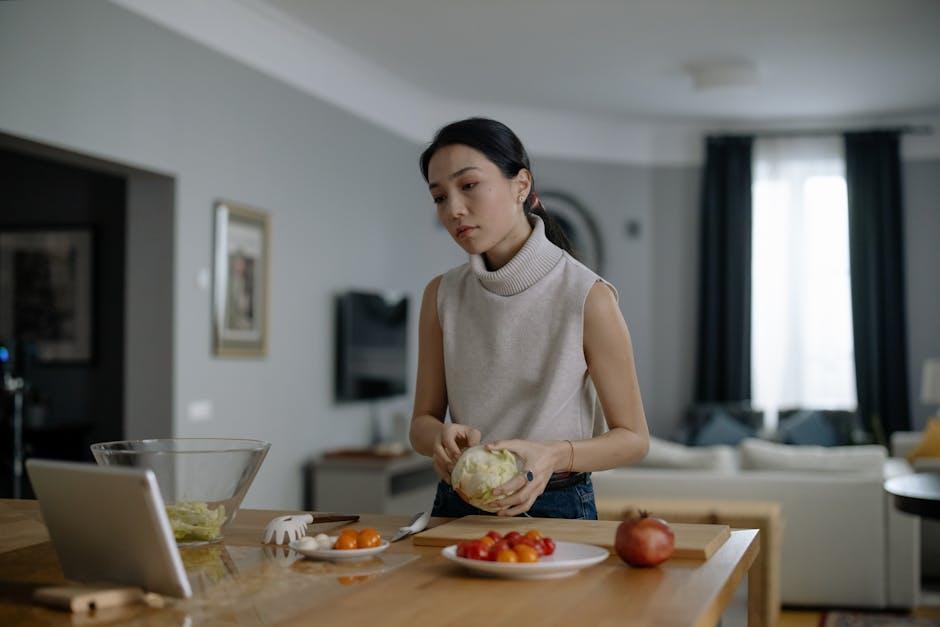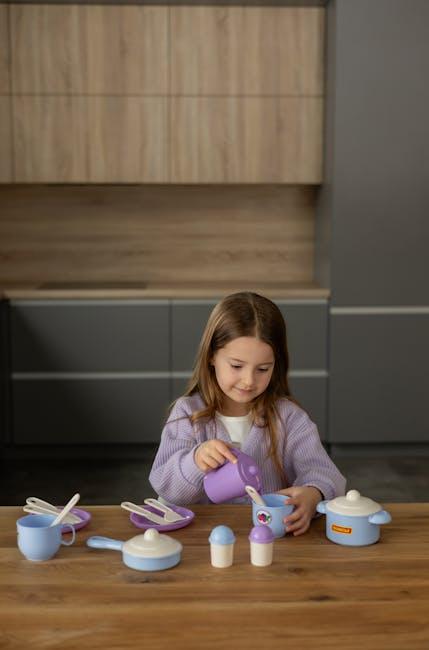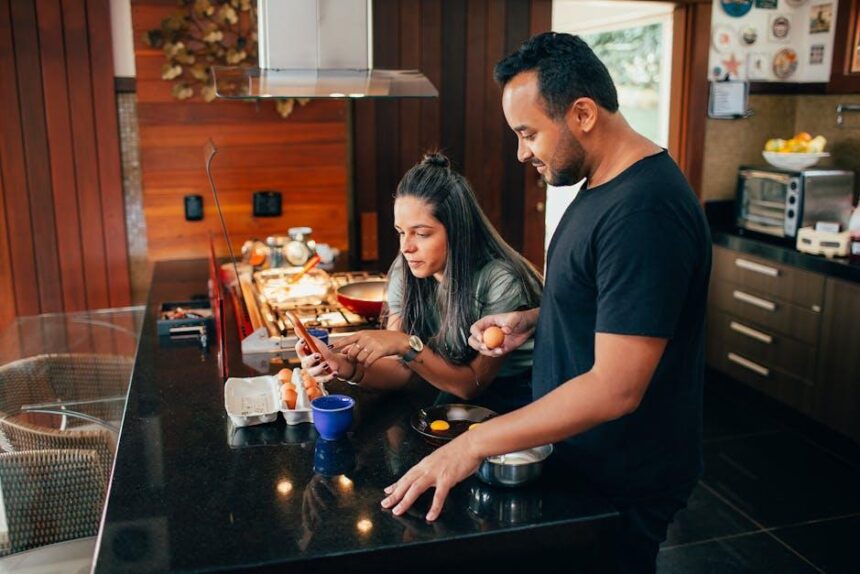In the rush of daily life, cooking often becomes a hurried task-a necessary step to fuel our bodies rather than a moment to savor. Yet, what if each chop, stir, and simmer could be transformed into a mindful ritual? Mindful cooking invites us to slow down, engage our senses fully, and cultivate a deeper connection to the food we prepare. This practice not only enhances the flavors on our plates but also nurtures a sense of calm and presence in the kitchen. In this article, we explore mindful cooking practices to try today, offering simple ways to turn everyday meals into moments of intentionality and joy.
Mindful Ingredients Selection for Enhanced Flavor and Nutrition

Choosing ingredients with intention transforms every dish into a meaningful experience, connecting you to nature’s rhythm. Prioritize seasonal and locally sourced produce-not only do they boast peak freshness and superior taste, but they also support community sustainability. When selecting proteins, opt for grass-fed, organic, or sustainably caught options to enhance both flavor and nutritional benefits. Embracing whole foods over processed alternatives enriches your meals with essential vitamins, minerals, and antioxidants, providing nourishment that goes beyond mere sustenance.
- Fresh herbs and spices: Elevate flavor without excess salt or sugar.
- Colorful vegetables: Incorporate a rainbow for diverse nutrients and visual appeal.
- Ancient grains: Explore quinoa, farro, or millet for added texture and fiber.
- Healthy fats: Choose olive oil, avocado, or nuts to enhance satiety and heart health.
| Ingredient | Flavor Profile | Nutrition Highlight |
|---|---|---|
| Turmeric | Earthy, warm | Anti-inflammatory compounds |
| Beets | Sweet, earthy | Rich in folate and fiber |
| Wild Salmon | Buttery, rich | High in omega-3 fatty acids |
| Kale | Bitter, robust | Loaded with vitamins A, C, and K |
Techniques to Slow Down and Savor Each Step of Cooking
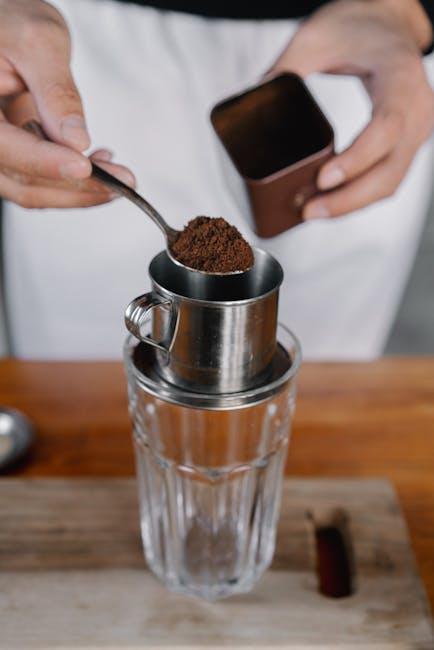
Embrace the aromas and textures as you chop, stir, and season your ingredients. Instead of rushing through the motions, pause to observe the subtle changes – the way onions soften and release their sweetness, or how spices unfurl their fragrance when warmed. Engage your senses fully: feel the weight of the knife, listen to the sizzle, and breathe in the evolving scent. This mindful practice turns cooking into a soothing ritual rather than a task to complete.
Try incorporating these simple habits to deepen your connection with each step:
- Set a timer to stretch the usual preparation time, allowing yourself to savor the process.
- Focus on one task at a time, resisting the urge to multitask.
- Use utensils and tools that feel good in your hands to enhance your sensory experience.
- Pause periodically to reflect on what you’re creating and express gratitude for your ingredients.
Creating a Calming Kitchen Environment to Foster Presence
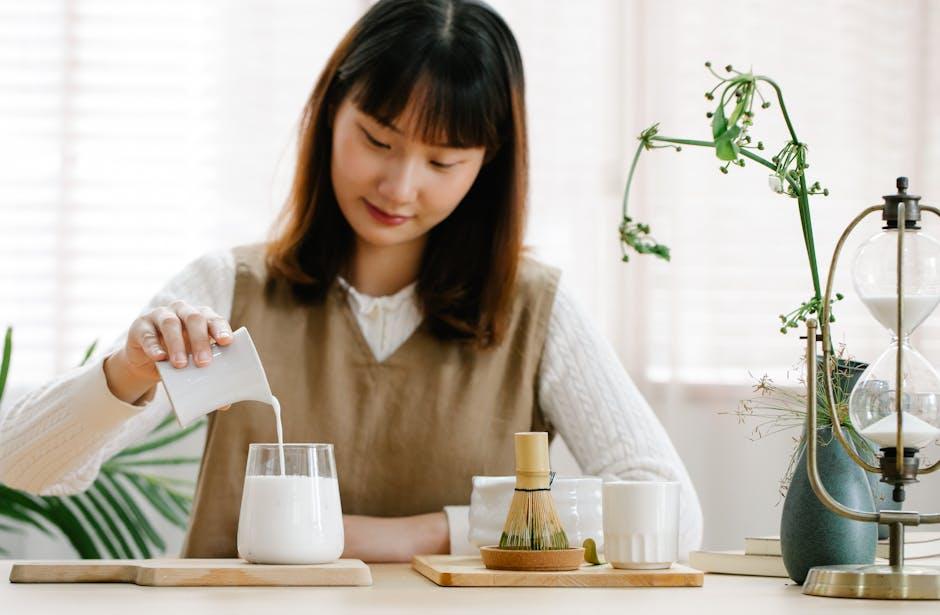
Transform your kitchen into a sanctuary where every utensil and ingredient tells a story. Begin by decluttering your countertops, allowing space for your creativity and calm to flourish. Incorporate soft, natural lighting or the warm flicker of candles to create a soothing ambiance that invites gentle focus. Introduce subtle, calming scents, such as lavender or citrus, through essential oil diffusers or fresh herbs to awaken your senses without overwhelming them. These small adjustments create a sensory-rich environment that encourages mindfulness and reduces the usual hustle of cooking.
Consider establishing a routine that signals the start of your mindful cooking session. This could involve putting on a favorite apron, playing soft instrumental music, or setting a simple ritual like deep breathing while washing your hands. Having a consistent pre-cooking routine grounds your attention and helps you transition from the distractions of daily life into the present moment. To keep this atmosphere intact, use natural materials-wooden spoons, ceramic bowls-that provide tactile comfort and enhance your connection to the food you prepare.
- Soft, natural lighting: encourages relaxation
- Essential oil diffusion: subtle aromatic support
- Natural material utensils: tactile engagement
- Quiet background music: soothing soundscape
- Pre-cooking ritual: mental grounding
| Element | Purpose |
|---|---|
| Decluttered Space | Minimizes distractions |
| Soft Lighting | Creates cozy ambiance |
| Natural Materials | Enhances sensory connection |
| Pre-Cooking Ritual | Builds mindful presence |
Simple Practices to Connect with Food Before and After Cooking

Embracing a deeper connection with your food begins long before the cooking process starts. Take a moment to appreciate the vibrant colors, fresh aromas, and varied textures of your ingredients. Engaging your senses in this way can transform routine meal prepping into a meditative experience. Try holding each ingredient in your hands, feeling its weight and texture, and silently acknowledging its journey from nature to your kitchen. This simple act of mindfulness invites gratitude and slows down the fast pace of everyday cooking, enriching your overall culinary experience.
After cooking, allow yourself to savor the meal without distraction. Set your table mindfully, perhaps with a candle or a small flower to create a calm atmosphere. As you eat, chew slowly, noticing each flavor and the nourishment it brings. You might find it helpful to keep a small journal nearby for jotting down your thoughts or emotions connected to the meal. This practice not only deepens your appreciation for the food but also nurtures a healthier relationship with eating – one that celebrates nourishment and presence over haste.
Final Thoughts
As the aroma of your mindful creations fills the kitchen, remember that cooking is more than just a task-it’s a moment to connect with yourself and the ingredients that nourish you. By embracing mindful cooking practices, you invite calm, focus, and creativity into your daily routine. So, as you stir, chop, and savor, let each mindful step remind you that the heart of good food lies not only in the flavors but in the presence you bring to the process. Happy cooking, one mindful moment at a time.


